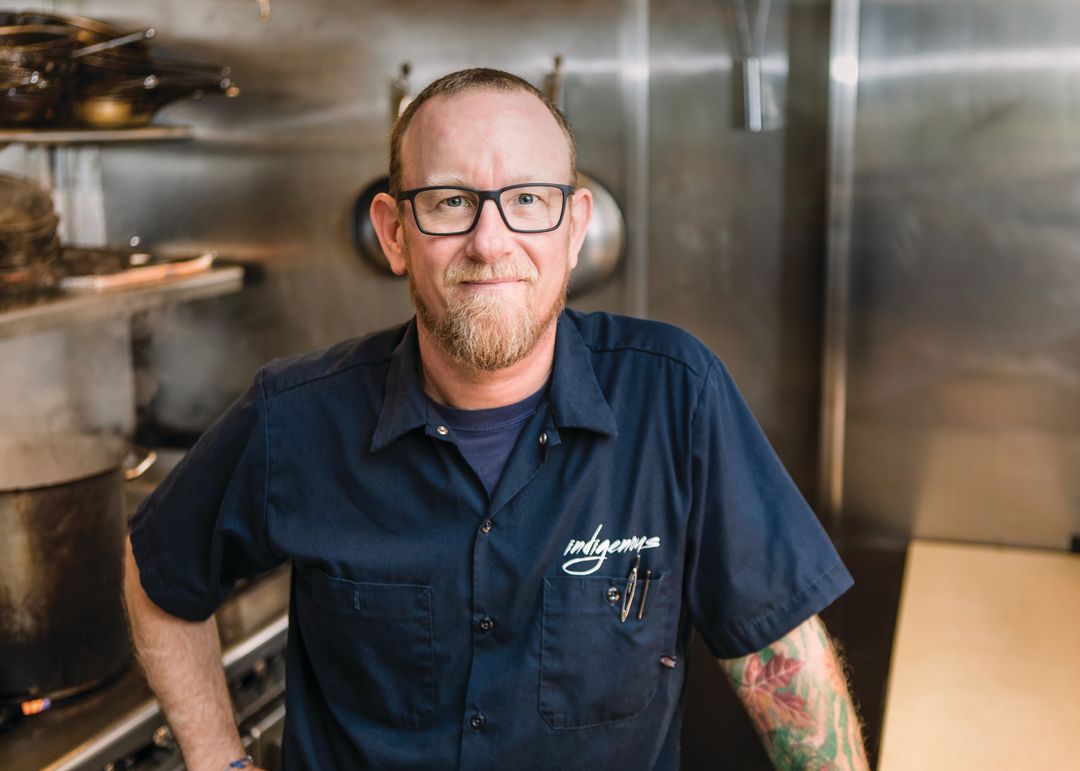Indigenous Chef Steve Phelps on His Restaurant's Survival and Recovery

Steve Phelps is still cooking.
Image: Courtesy Photo/ ©Indigenous
As of March, Steve Phelps, the co-owner of Indigenous, the award-winning Sarasota restaurant he opened in 2011, has found himself navigating a global pandemic that has ravaged the restaurant industry. He’s in charge of a staff of 20, some of whom are still working to provide takeout meals, and he still cooks in the kitchen Thursday through Saturday, creating menus based on what’s in season and what’s biting. He’s also had to come up with new procedures to keep his employees and customers safe from COVID-19 and is planning for what is going to happen to businesses like his once the pandemic passes. “I’m trying to figure out how to save the restaurant,” he says.
He’s not alone. Millions of restaurant workers have been laid off since the pandemic began, and many restaurants are not expected to survive the economic downturn.
Indigenous has a number of advantages over other eateries. For starters, the restaurant property is owned by Phelps’ business partner, so Phelps doesn’t have to worry about rent, which he says can average between $8,000 and $10,000 a month for places downtown. Indigenous has also been around for nearly a decade, with excellent reviews, broad name recognition and enough established fans that it can be tough to get a reservation in season. The restaurant also boasts a devoted staff that has followed Phelps throughout his career.
Even with those built-in advantages, Phelps sees big changes in store for Indigenous—and most other restaurants. After the pandemic passes, people may be reluctant to eat out, meaning restaurants will be doing more takeout and delivery. For restaurants like his, where dishes are meant to be eaten right away, and where the ambiance is a big part of the experience, that will be a challenge.
“It’s going to be a new world when we get back,” Phelps says. “Places like me, that have a little heftier price tag, it’s going to be rough. No one’s going to go out and buy a $28 fish entrée for takeout.” Fine dining sales around the country have declined in recent years because of the rising popularity of fast-casual eateries and mid-priced restaurants that appeal to people who eat out often.
At home, Phelps has been coping by making food that can cover multiple meals. Think roasted chicken, pork loin and turkey, plus staples like rice and beans. But even when he’s trying to indulge in a favorite pastime, like fishing, he starts feeling guilty about not working. “I am an absolute workaholic, which is my worst problem in the world,” Phelps says. “I can’t turn it off.”
Try one of Phelps’ favorite home-cooked dishes: Roasted Spatchcock Chicken
This recipe is intended to create multiple leftover meals after cooking. Mix and match with whatever you have in your pantry to make chicken and black bean tacos, chicken pita sandwiches or fresh salads topped with chicken. Save the bones to make stock.
Ingredients
1 3-pound natural or organic chicken
Bottle of vinaigrette or salad dressing (not creamy)
1/4 cup olive oil
1 tsp. dried thyme
1 Tbsp. chopped rosemary
3 cloves garlic, minced
1 Tbsp. lemon zest
1 Tbsp. paprika
1/2 tsp. salt (or more, to taste)
Directions
1. Brine chicken in vinaigrette or salad dressing overnight or for at least 6-8 hours.
2. Preheat oven to 325 F.
3. Remove chicken from brine. Drain and pat dry. Place the chicken breast side down, with the legs toward you. Using a pair of kitchen shears, cut up along each side of the backbone, cutting through the rib bones as you go. Rub chicken all over with spices and seasonings.
4. Place chicken on baking sheet or in casserole dish and bake for 1 hour. After 1 hour, increase temperature to 400 degrees and continue to cook for 15 minutes to brown the skin. Be sure chicken is cooked inside, up to 165 degrees. Remove chicken from oven and allow to cool for 45 minutes. Break down chicken for leftover dishes after it is completely cooled.



